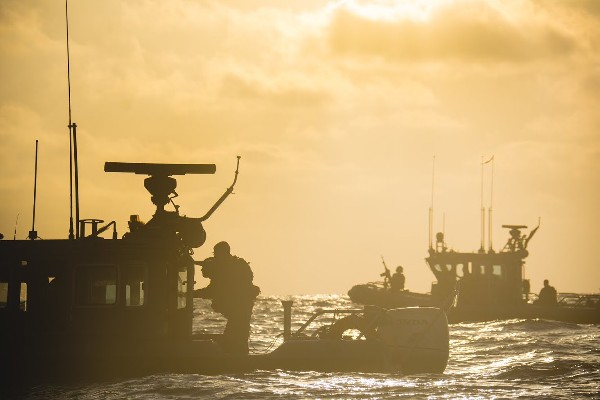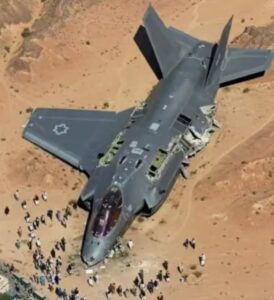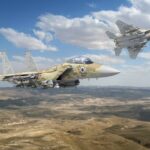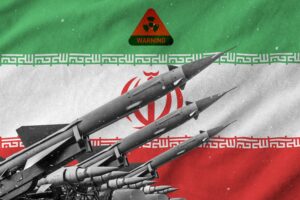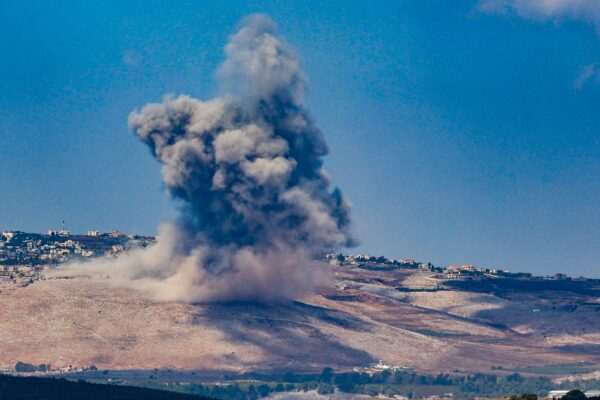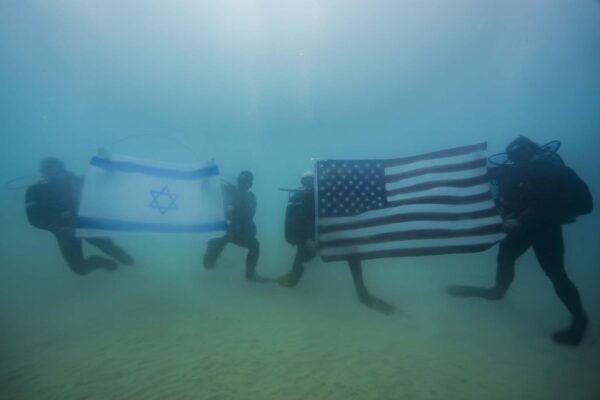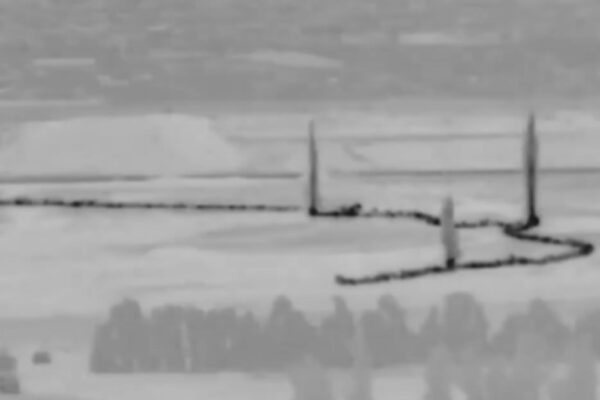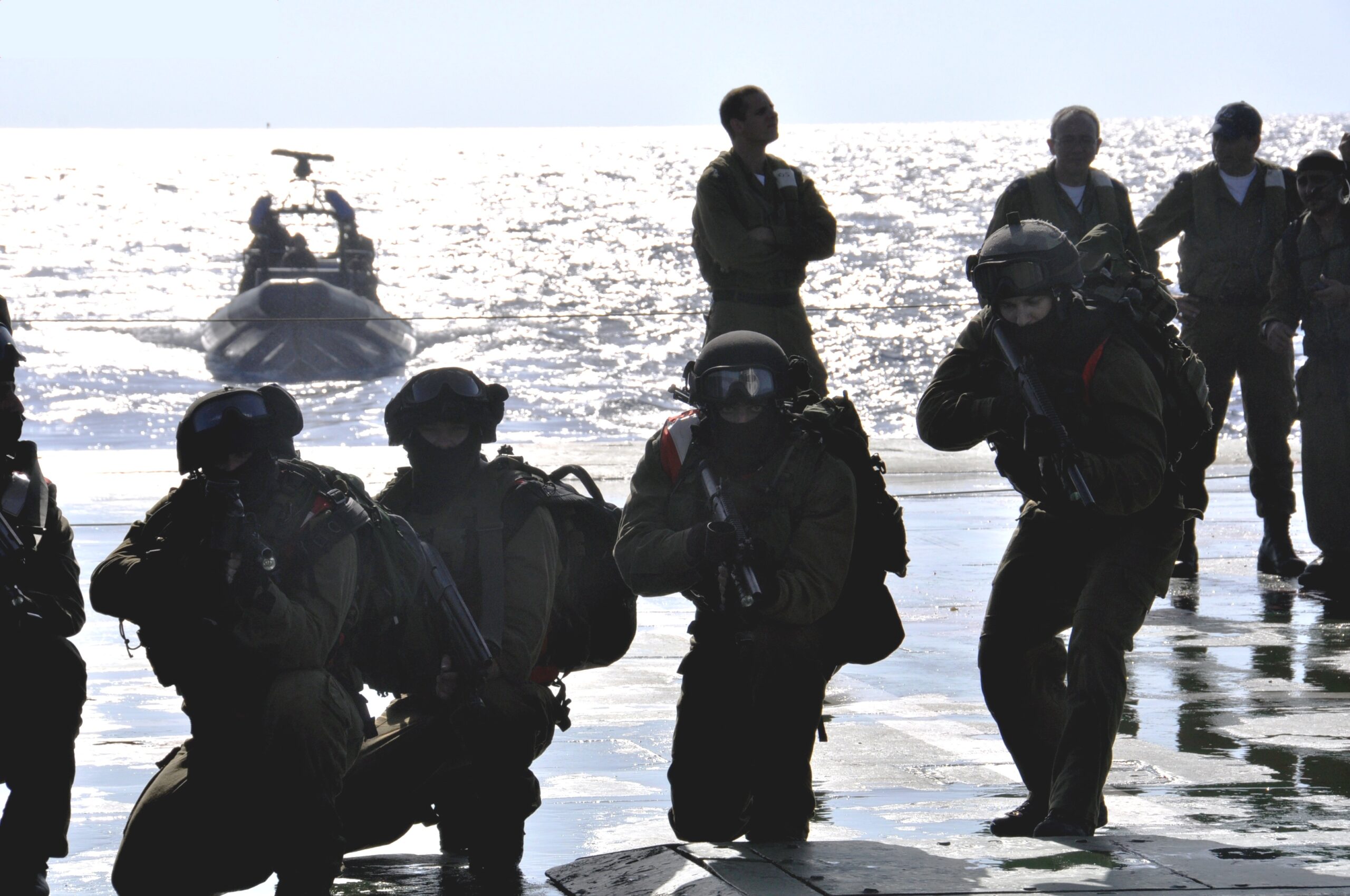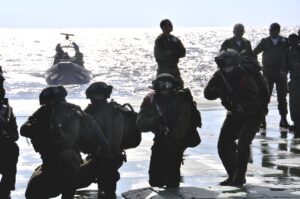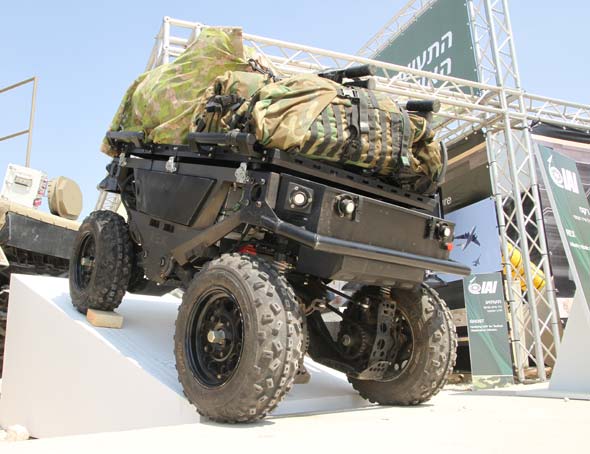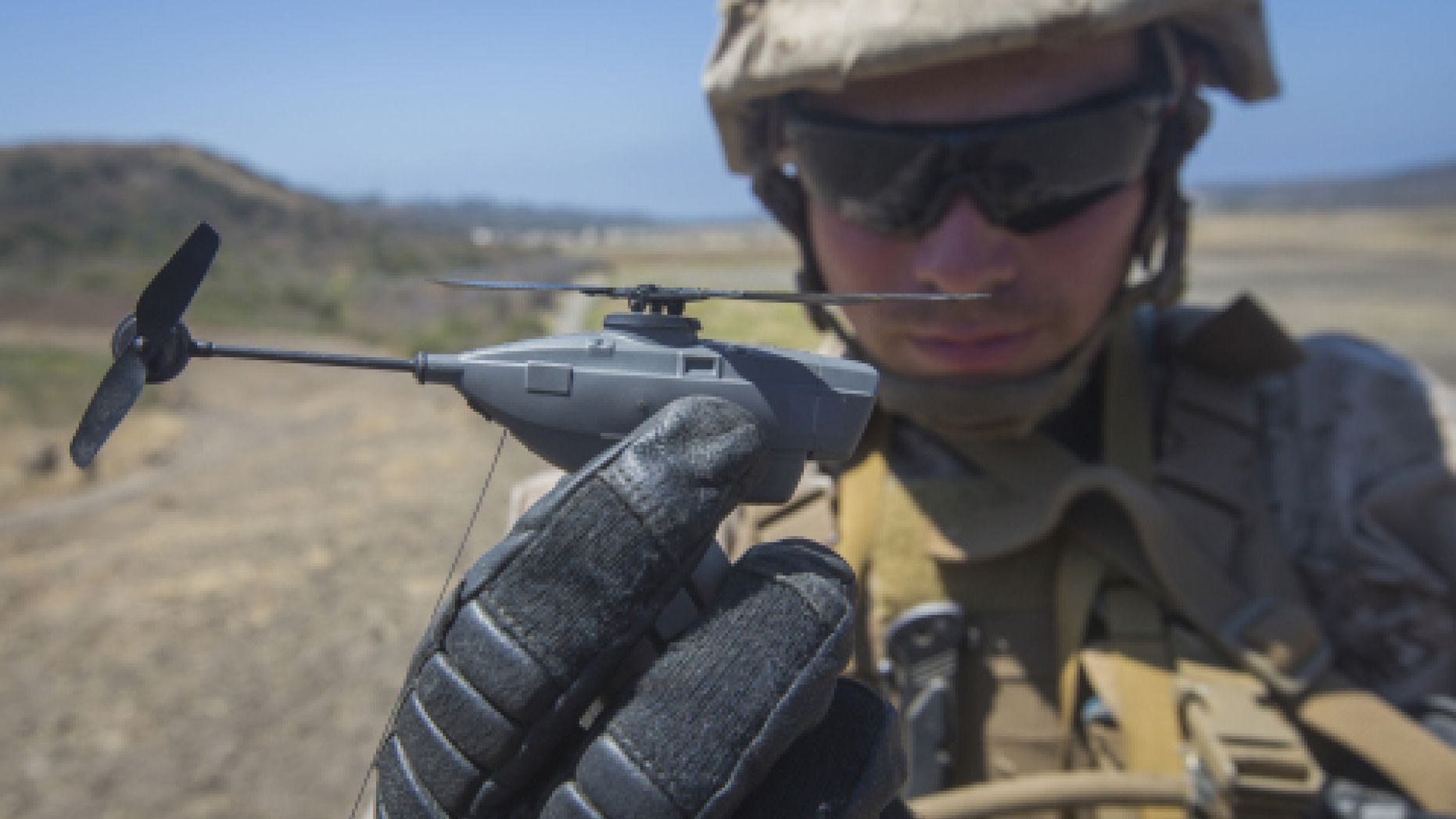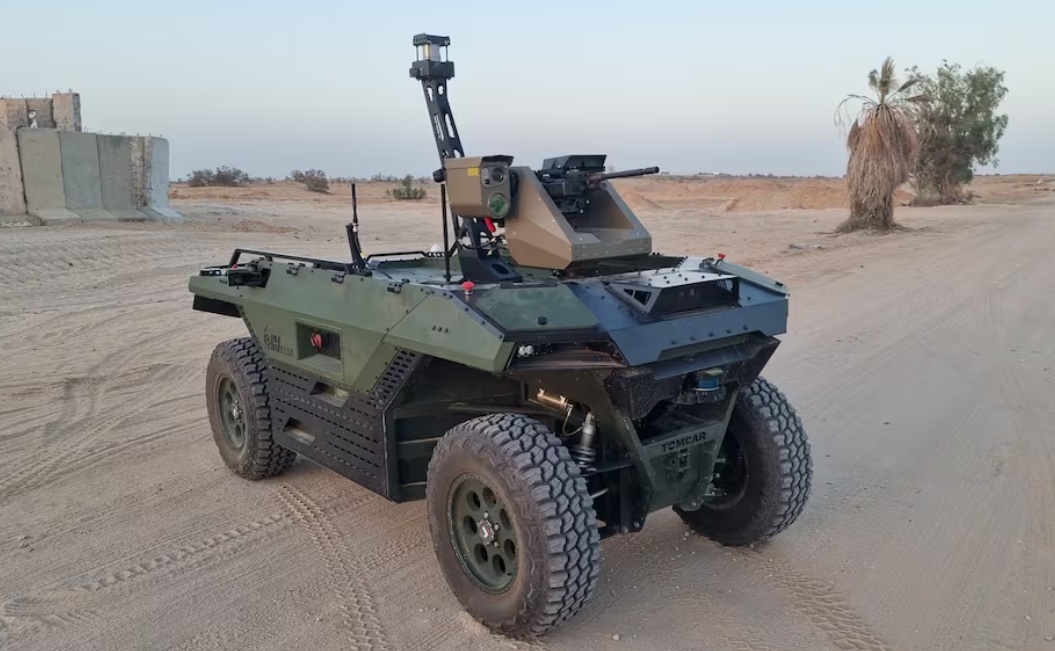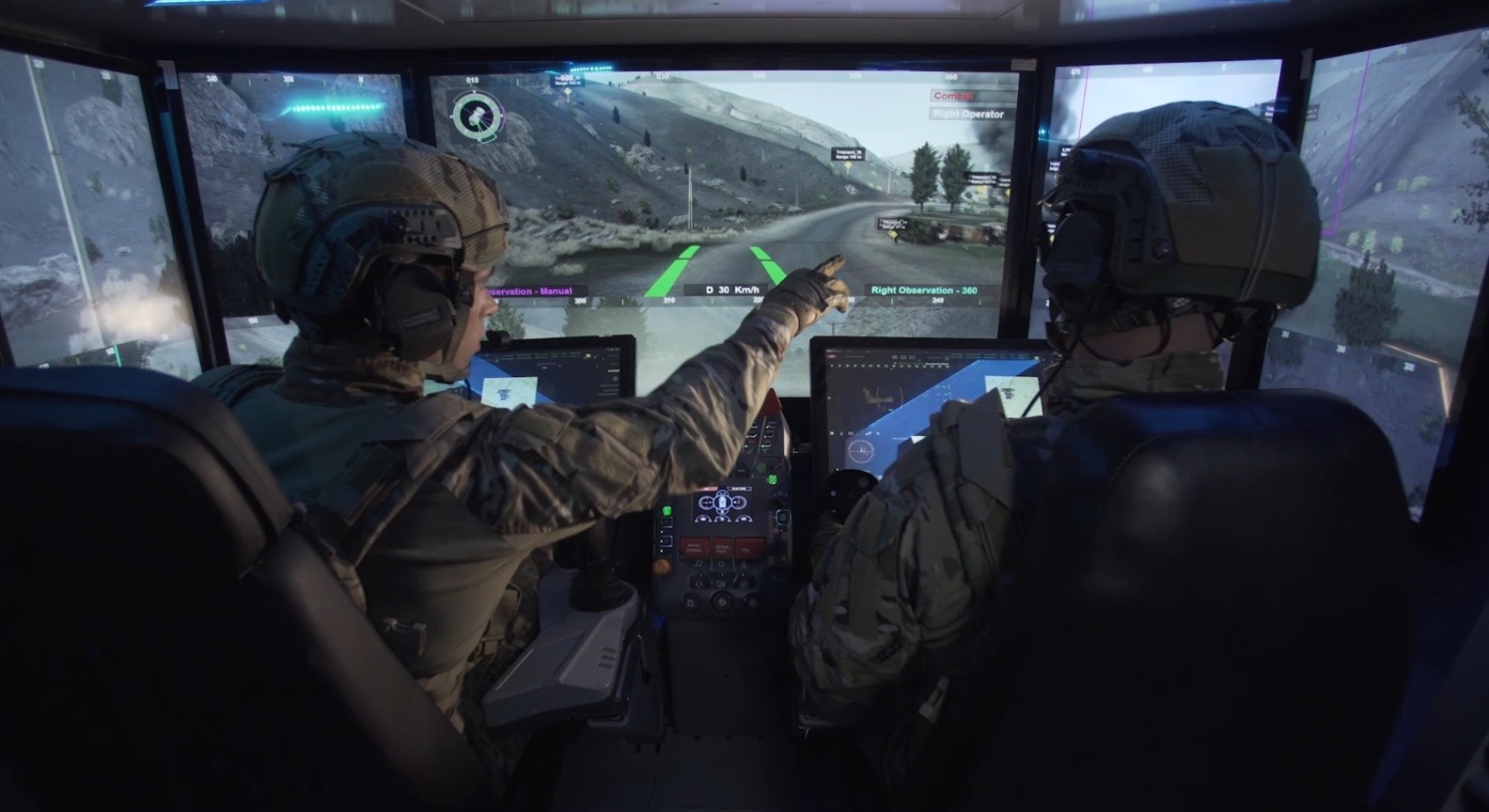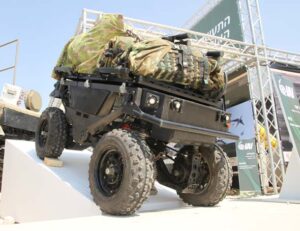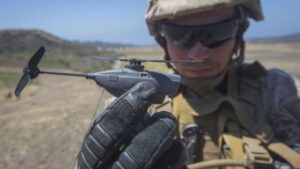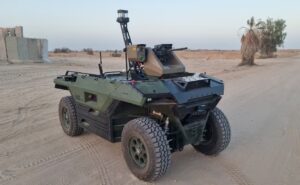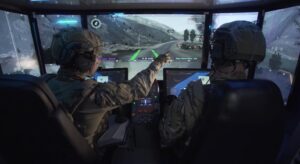The Israeli Navy operates a compact fleet centered on Sa’ar 6 and Sa’ar 5 corvettes, advanced missile boats and Dolphin-class submarines believed to provide second-strike capability.
By Shimon Sherman, JNS
Since its inception, Israel has continuously demonstrated its quality across almost every type of military asset.
From Israeli Air Force raids to daring special forces operations to unimaginable feats of military intelligence, Israel is a recognized military powerhouse.
Historically, however, a critical weakness in Israel’s military capacity has been its ability to project naval power.
For a country straddling both the Mediterranean and the Red Sea in one of the world’s most strategic locations for naval dominance, this reality constitutes a glaring omission.
“With most of Israel’s security challenges originating on land, and its power projection relying primarily on air capabilities, the navy has historically been the least significant branch of the IDF, ” Ehud Eiran, a senior researcher and expert on Maritime Strategy at the University of Haifa, told JNS.
“As Israel increasingly recognizes the strategic importance of its maritime domain, the navy’s role and influence have grown, albeit gradually,” he added.
Israel’s Navy lacks aircraft carriers, cruisers, destroyers and frigates, the markers of most modern and powerful navies, and is satisfied with Corvettes, fast attack boats and patrol boats.
Augmenting this force is a small collection of Dolphin-class submarines and the Shayetet 13 Naval Commando Unit, which is widely regarded as one of the best special forces units in the world.
Importance of naval operations
Despite this lack of conventional naval power since Oct. 7, 2023, the Israeli Navy has adapted and taken on a significant role in Israel’s national security.
“The IDF, including the navy, has demonstrated notable agility and adaptability in the current conflict,” Eiran observed.
During the war, Israel’s navy operated under near-constant threat across multiple maritime fronts.
On Oct. 7, 2023, when Hamas launched a coordinated amphibious infiltration at Zikim Beach, deploying naval commandos in inflatable boats and a fishing vessel laden with explosives, Israeli naval patrols detected the approach early and engaged the force at sea, destroying several craft before they reached the coast.
A small number of terrorists managed to land and were eliminated in close combat by IDF troops.
The incident revealed the extent of Hamas’s investment in maritime warfare: the group had built training sites along Gaza’s shoreline, constructed underwater tunnels and developed submersible explosives, all of which became targets in subsequent Israeli air and naval strikes on the Strip’s coastal infrastructure.
Further south, the Houthis in Yemen opened a persistent and escalating front in the Red Sea and Bab el-Mandeb Strait.
Beginning in late 2023, Houthi forces launched dozens of anti-ship ballistic missiles, cruise missiles, and explosive drones toward commercial and military vessels associated with Israel and its allies.
Several of the attacks targeted shipping bound for Eilat, disrupting global trade routes and forcing maritime traffic to reroute around Africa.
The Houthis also declared Israel’s Leviathan and Tamar gas platforms as targets and attempted long-range strikes toward Israel’s southern coast.
In response, Israel deployed corvettes and Dolphin-class submarines to the Red Sea.
In June and August 2025, after repeated Houthi launches, the Israeli Navy carried out a major precision strike on Houthi military infrastructure in Yemen, reportedly targeting radar installations, ports and a power plant near Hodeidah and Taiz.
The operation, conducted in coordination with allied naval intelligence, marked Israel’s farthest naval strike since its inception and was aimed at neutralizing launch zones threatening Israeli and international shipping.
In the north, Hezbollah expanded its maritime activity, flying reconnaissance drones and UAVs toward Israel’s offshore gas fields and issuing threats against the Karish and Tamar platforms.
Israeli naval units increased patrols along the Lebanese maritime boundary and deployed shipborne interceptors to guard critical infrastructure.
Meanwhile, the Israeli Navy also faced recurring encounters with pro-Palestinian flotillas departing Turkey, Cyprus, and European ports attempting to breach the Gaza blockade.
Israeli commandos intercepted these vessels at sea, often under international scrutiny, preventing their entry into Gaza’s waters.
Eiran further noted that the navy also had a significant role in intercepting long-range drones and missiles that targeted Israel throughout the war.
“The navy contributed to monitoring and intercepting missile and UAV threats,” Eiran explained.
“Although most operational details remain classified, given that some threats approached via the sea, it is reasonable to infer that the navy played a significant role in detecting and mitigating them.”
Together, the Hamas amphibious assault, Houthis’ missile and drone campaign, Hezbollah’s northern provocations and the foreign activists’ flotillas created an unprecedented multi-theater maritime challenge, stretching the Israeli Navy’s operational reach from the Eastern Mediterranean to the southern Red Sea.
The expanded scale of operations came together with significant technological and doctrinal shifts in Israel’s naval approach.
Technological development
While the technological evolution of the Israeli Navy cannot be ascribed exclusively to the war, as much of the development was planned and advanced in previous years, the Swords of Iron war did lead to the full-scale integration of this development into Israel’s naval power. It has further put the spotlight on Israel’s leading role in naval technology.
The Sa’ar 6 class corvettes emerged as the centerpiece of this modernization. Each ship carried the C-Dome system, the naval variant of Iron Dome, providing Israel with layered air and missile defense at sea.
The vessels were also fitted with high-resolution radar arrays, advanced command systems, and integrated data links connecting them to Israel’s national defense network.
Parallel to these fleet upgrades, Israel deepened its use of autonomous and semi-autonomous maritime platforms.
Elbit’s Seagull and Rafael’s Protector unmanned vessels were integrated more deeply for harbor security and offshore patrol roles, while IAI’s Blue Whale autonomous underwater vehicle was used for long-range reconnaissance and signals intelligence.
These platforms operated with minimal human oversight and transmitted real-time data via satellite to command posts at sea and on land.
Alongside Naval assets, Israel has also augmented its land-based resources to protect its coasts and prevent maritime infiltrations.
A system of drone patrols, radar stations, and surveillance towers alongside the Mediterranean and Red Sea coasts was upgraded and now operates in synergy with Israel’s Naval forces to assert full control over Israel’s seaboard.
Israel’s defense industry also expanded its role as a global supplier of naval technology, exporting innovations born from wartime necessity.
In 2024, Elbit Systems secured over $300 million in contracts from NATO members for sonar arrays, battle-management systems and electronic-warfare suites, while Orbit Communications delivered satellite components for the Polish Navy.
On the industrial side, Civan Lasers advanced next-generation welding methods that sped up shipbuilding in allied countries, and maritime AI firms such as Orca AI, Windward, and Cydome supplied navigation, analytics and cybersecurity solutions to international fleets.
Shift in doctrine and strategy
Alongside its adaptation of new technologies, the Israeli Navy also transformed its naval policy. The surprise maritime attack launched by Hamas on Oct. 7 fundamentally jolted Israel’s view of naval defense strategy.
What was previously seen as a posture of deterrence and containment evolved into one premised on proactive readiness.
Before the war, naval deployments had often been reactive, responding to threats as they emerged.
After the October assault, the doctrine was recalibrated: Israel’s navy now emphasizes forward positioning, constant maritime presence, and sea control even before overt attacks.
In this revised doctrine, Israel moved away from treating naval forces as mere support wings to other services.
Instead, the Navy was integrated as an important actor in land-sea-air joint maneuvering. Israel began assigning naval units to protect the approaches to Gaza, Lebanon, and the Red Sea, effectively converting the coastal zone into a contested front.
The Israeli Navy’s mission set expanded from sea defense to offensive interdiction: striking enemy assets before they launch, maintaining control of choke points, and safeguarding offshore economic infrastructure as a core naval responsibility.
Another element of the doctrinal shift was the recognition that Israel’s naval operations would need to function on two distinct levels.
The navy has traditionally focused on littoral warfare, fast, close-to-shore engagements against asymmetric threats like drones, missile boats and infiltration teams operating near Gaza and Lebanon.
“The littoral focus reflects Israel’s strategic outlook for most of its existence: a concentration on immediate, neighboring threats rather than an ambition to shape the broader regional or global environment,” Eiran said.
At the same time, its strategic mandate expanded outward, assigning it responsibility for the defense of Israel’s wider maritime domain: the energy rigs in the Eastern Mediterranean, shipping corridors through the Red Sea and trade routes linking Eilat to global markets.
This combination redefined the Navy as a force required to fight locally while securing regionally, maintaining dominance in shallow coastal waters while projecting presence and deterrence across vast, interconnected maritime spaces.
Eiran cautioned, however, that it remains to be seen whether these shifts will be integrated into the Israeli Navy’s long-term strategy.
“It is not yet clear whether these adjustments have been formally incorporated into doctrine or standard operating procedures, a process that will likely take time,” he noted.
Small and smart
Israel’s naval power stands out in the Middle East for its technological sophistication rather than its size.
The Israeli Navy operates a compact fleet centered on Sa’ar 6 and Sa’ar 5 corvettes, advanced missile boats and Dolphin-class submarines believed to provide second-strike capability.
These vessels integrate layered air defense, precision-guided munitions, and electronic warfare systems unmatched in the region.
However, despite all the technological development, the navy’s lack of conventional power prevented it from playing a decisive role in the war, comparable to the IDF’s infantry or the air force.
“Aside from providing limited naval support during the IDF offensive in the Gaza Strip and protecting Israel’s gas fields, decision-makers avoided involving the Navy in securing freedom of navigation to and from Israel in the Red Sea or conducting attacks on land targets in distant areas,” (ret.) Navy Rear Admiral Shaul Chorev wrote in a recent report.
Chorev went on to explain that the Israeli Navy, as it was currently constructed, was incapable of achieving its stated goal of naval supremacy.
“The navy’s continued emphasis on ‘achieving naval superiority’ in its mission statement is outdated and should be reconsidered. In today’s context of naval warfare, even the goal of achieving ‘naval control’ is inherently complex,” Chorev said.
By contrast, Israel’s neighbors like Egypt and Turkey possess much larger fleets, with multiple frigates, amphibious assault ships, and large warships approaching destroyer-scale.
The large-scale conventional naval power allows them to project power across wide areas. Egypt operates FREMM and Gowind frigates, while Turkey recently commissioned the TCG Anadolu, a drone-capable amphibious carrier, giving it a level of naval reach that Israel’s corvette fleet cannot match.
Iran, meanwhile, presents a different challenge: a hybrid force built on submarines, fast-attack craft, and long-range drones designed for asymmetric rather than conventional warfare.
Its two-tiered naval structure, comprising the Islamic Republic Navy (IRIN) and the IRGC Navy, fields hundreds of small missile boats, a growing submarine arm, and surface vessels now venturing as far as the Red Sea and Arabian Sea.
Israel’s navy, though technologically superior in sensors, networking and precision weaponry, lacks the hull numbers and blue-water capacity to sustain extended operations far from its shores.
The result is an asymmetric balance: Israel dominates in quality and intelligence integration, while others outmatch it in scale and conventional power.
In some scenes, the current framework mirrors the “small and smart” paradigm, which governed the general trajectory of the IDF for many decades before Oct. 7.
The philosophy that emphasizes automation, precision, and networked control over mass, presence, and conventional power was ascribed by multiple analysts as a central cause of the security failure on Oct. 7.
In a region in which Turkey and Egypt deploy traditional fleets and Iran continuously expands its assets, the Israeli Navy risks being overstretched. This can be most clearly seen in Israel’s inability to rein in the Houthi Naval blockade.
Technologically unmatched but structurally slim, the Israeli Navy is a force that is able to strike hard rather than project naval dominance.


